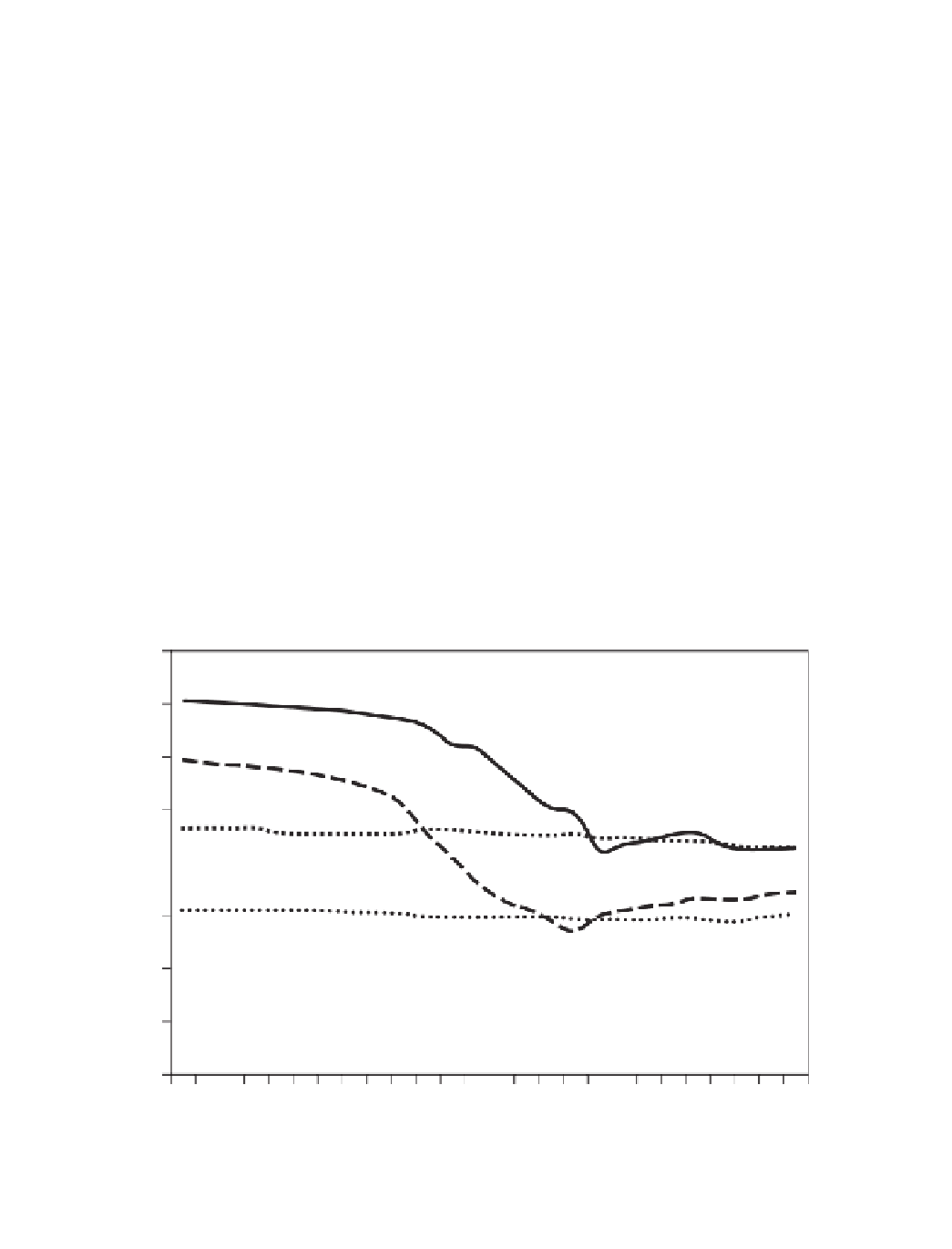Biomedical Engineering Reference
In-Depth Information
digestibility. It is only in recent years that researchers increased their effort to convert
biomass to industrial products. One of the ways of utilizing biomass is to directly convert it
into biofuels or biopolymers. Another major way of utilizing biomass is to convert it into
smaller molecules as chemical building stocks (CBS) for making chemical end products.
12.2.1 Southern pine wood
Woody biomass contains plant roots, bark, leaves, branches, limbs, trunks, and vines from
trees and shrubs. Just as trees are grown to produce lumber and other products for paper and
furniture industries, trees can be grown for chemicals, polymers as well as energy. In the
southeastern United States, pine plantation is the most abundant source of woody biomass.
Plantation pine silvicultural practices have been adopted for a rapidly increasing share of
timberlands in the South as shown in Figure 12.1 by the increased annual acreage of trees
planted over time. From 1952 to 1996, 57 million acres of pines were planted in the southern
United States (Smith
et al
., 2009). In 1994, total privately owned plantation pine acreage in
the South was 30 million acres or about 47% of the total privately-owned forested acres
(Siry and Bailey, 2003). Modern plantation pine cultural practices call for planting of
genetically improved seedlings that grow 16% faster than the traditional stock. Wide,
between-seedling spacing followed by early thinning has resulted in rapidly increased
growth rates (Zobel and Jett, 1995). Siry and Bailey (2003) estimate that pine growth in the
southern United States increased at an average rate of 2.6% annually from 1987 to 1994, and
increased at an average rate of 2.8% annually from 1994 to 2004. Fox and co-workers
(2007) had the same prediction and reported the pine growth rate in intensively managed
plantations in the South may exceed 400 ft
3
/ac/y).
400
350
South
300
North
250
Pacific coast
200
150
Rocky mountain
100
50
0
1630
1800
1850
1900
1953
2007
Figure 12.1
Forest area trends in the United States by major region, 1630-2007 (Smith et al., 2009).




Search WWH ::

Custom Search